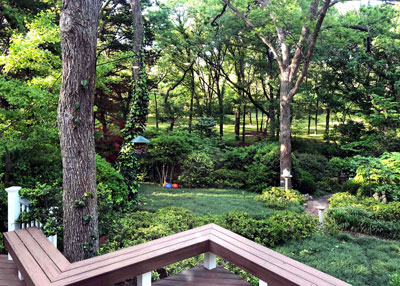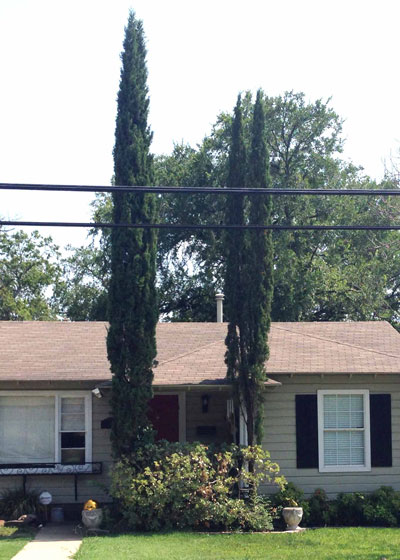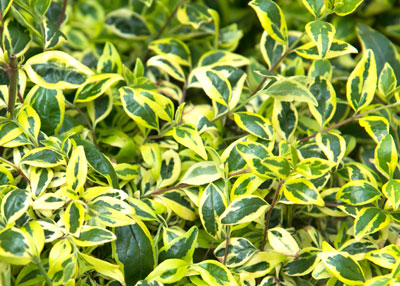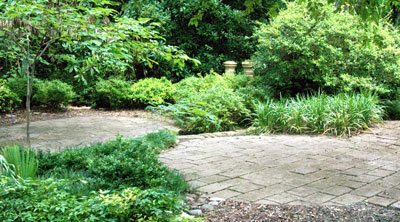Progressions in Landscaping
Like any other living, breathing being, your landscape will go through its phases. Over the years, your needs and expectations will change. And likely, so will the plantings you made 15 or 20 years earlier.
This is all actually the very same thing that happens to the inside of your house. The baby’s room becomes a home office because the baby just left for college. Kitchen appliances go through major upgrades. Things change.
The same things happen outdoors, and it’s those changes in your landscape that make gardening such an enjoyable hobby. You’re never really finished. Your garden is always a moving target. There’s always something to fuel the fire of landscaping excitement. Let’s look at some of the most noticeable shifts you’re likely to encounter.

• Shady solutions. Sooner or later, if you live in a house long enough, those little trees that you planted will grow into magnificent specimens, taking their place in our vast urban forest. You wanted shade, and that’s just what they’re bringing. Heavy shade. Kill-the-grass shade. Shade that makes you cry out for an entirely new group of plants that won’t need sunlight to survive.
It’s not uncommon, when trees grow to full size, for gardeners to have to redesign beds to conceal big patches of bare ground. St. Augustine is our most shade-tolerant turfgrass, but even St. Augustine has to have 5 to 6 hours of full, direct sunlight each day – and that’s just to hold its own. If the dead areas in your turf align proportionately with the shadier spots, you need to switch over to mondograss, liriope or some other shade-tolerant groundcover. Even purple wintercreeper euonymus and Asian jasmine, normally thought of as full-sun plants, will outperform grass in heavy shade.

• Taming the tall plants. Like children, young plants look handsome and harmless. Then they become teenagers, and your struggles begin. Both our plants and our children become large and boisterous. We do our best to control them. But, try as we will, they seem to ignore all efforts to guide them.
There are several good reasons that we end up with the wrong plants for our spaces. Maybe we never looked at the plant tag to see how tall or wide it would grow. We probably never sought help from a Texas Master Certified Nursery Professional. Or, maybe we just assumed we could keep a plant in bounds by pruning as needed. We soon discovered that “as needed” had turned into a weekly chore. If you have an 8-foot shrub where a 4-foot one would do, rather than pruning incessantly, maybe you simply should dig and remove it. That would give you the chance to choose some other species better suited to the space that’s available.

• Welcoming newcomers. The past 20 years have seen a massive number of new plants brought into the market. Some are types we’ve never seen before, but many are improved selections of old favorites. Many are trademarked hybrids, chosen for their unique habits (and for the grower’s ability to claim royalties on a plant no one else has).
These new types of plants deserve your consideration. You’ll find new crotons, colocasias and coleus, and you’ll run into unusual abelias, nandinas, crape myrtles and hollies. In just about any plant group you like, you’ll find something new and exciting. They’re a great way of creating a fresh look in your gardens.

• Room for recreation. How your family uses its landscape shifts as kids mature. Where you once built a fortress or playhouse, now you want a flower garden or greenhouse. Our lives and expectations change as we and the other people around us mature or move off. Your landscape is there to serve you. Repurpose your property so that it will provide for your needs.
• Scaling things down. Many of us develop frailties as we stack on the years. We decide that it’s just fine to shrink the size of our color beds, and we opt for a few herbs and vegetables instead of a farm garden. Many of us have found, through trying to keep up with old dreams, that it’s a lot easier on our minds and our bodies if we simplify back to the basics. Low-maintenance, trouble-free plants in gentle garden designs – it’s really a pretty good concept.
